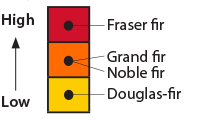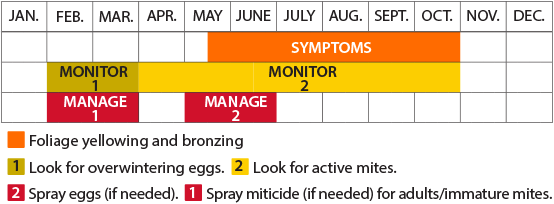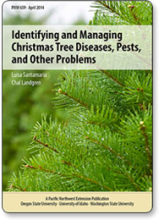- Rusty or bronze colors near the base of the needles; damage possibly most severe during hot, dry weather
- Premature needle drop
- Damage heaviest at the bottom, inside of the tree
- Permanent chlorophyll loss
- Fine webbing at base of needles and twigs; cast skins, dead mites, dirt, and other debris trapped in the silk
- Diseases
- Insects
- Disorders
- Damage
- Weather Damage
- Frost Damage
- Winter Injury
- Drought
- Heat Damage
- Chemical Damage
- 2, 4-D and Triclopyr
- Fertilizer Burn
- Glyphosate (Roundup)
- Triazines
- Vertebrate Damage
- Deer, Elk, Mice & Voles
- Rabbits & Birds
- Mechanical Damage
- Mechanical Damage
- About
- Order


